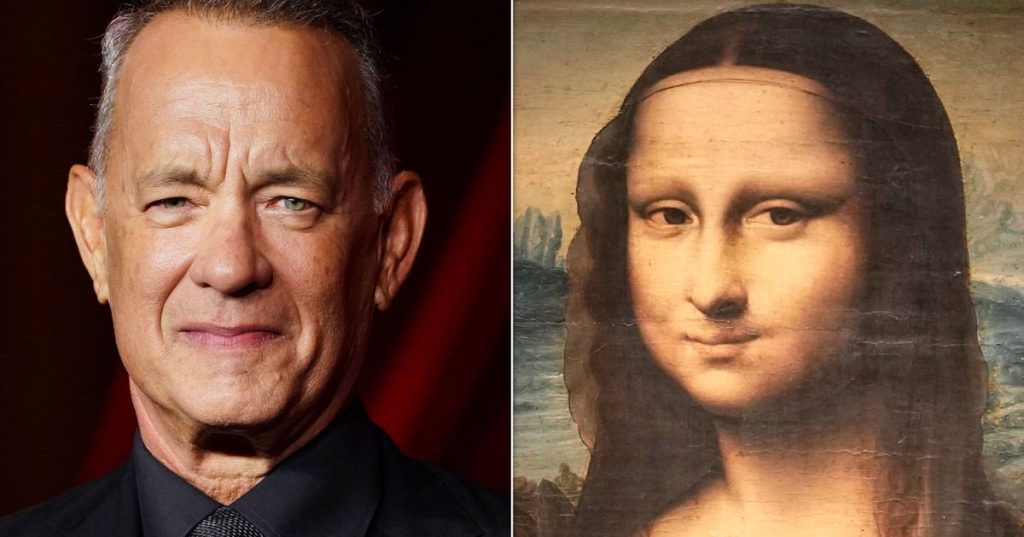Filmmaking, especially for major Hollywood productions, is often a meticulously planned process, with every detail carefully considered. However, even with the best-laid plans, the unpredictable nature of production can lead to unexpected moments that become memorable anecdotes. Such was the case during the filming of “The Da Vinci Code” (2006), directed by Ron Howard and starring Tom Hanks. During a panel at the MegaCon convention in Orlando, Florida, Howard shared a humorous and revealing story about one of the most iconic moments in the film’s production—a moment that involved Hanks, the Mona Lisa, and a rather quick wardrobe change.
Howard recounted how the tight schedule and the challenges of filming in the renowned Louvre Museum in Paris led to a particularly frantic moment. With limited time to film in one of the world’s most famous and meticulously preserved cultural institutions, the crew had to work efficiently. At one point, Hanks found himself in a situation where he had no time to return to his dressing room between scenes. Instead, he had to change his pants right there in the Louvre, in front of the enigmatic smile of the Mona Lisa. Howard, with his characteristic humor, framed the moment as a unique addition to their shared cinematic history, referencing their previous collaborations in films like “Splash” and “Apollo 13.” This lighthearted anecdote not only entertained the audience but also offered a glimpse into the pressures and improvisational nature of filmmaking.
The story, while amusing, also highlights the challenges of filming in a historic and culturally significant location like the Louvre. Howard emphasized the strict guidelines the crew had to follow to preserve the museum’s priceless masterpieces. For instance, the lighting had to be carefully controlled; lights couldn’t shine directly on the artworks but instead had to be bounced off the floor to create a soft, protective illumination. Despite these constraints, the crew managed to film for three consecutive nights in the Louvre, a testament to their dedication and the significance of the location to the story. The tight schedule and the meticulous care required to film in such a setting were just a few of the hurdles the team had to overcome during production.
The behind-the-scenes chaos, however, didn’t hinder the film’s success. “The Da Vinci Code,” based on Dan Brown’s best-selling novel, was a major box office hit, grossing over $760 million worldwide. The film’s success was fueled by the immense popularity of Brown’s books, which had already cultivated a dedicated fan base. The star-studded cast, including Tom Hanks and Ian McKellen, further cemented the film’s appeal. Howard and Hanks went on to collaborate on two more films in the series, “Angels & Demons” (2009) and “Inferno” (2016), solidifying their professional partnership and the franchise’s enduring popularity, despite mixed critical reception.
Beyond its commercial success, Howard’s anecdote about Hanks changing clothes in front of the Mona Lisa adds a layer of charm to the film’s legacy. It humanizes the actors and filmmakers, reminding audiences that even in the high-stakes world of A-list cinema, there are moments of vulnerability and humor. The image of one of Hollywood’s most respected actors hastily changing his pants in one of the world’s most iconic museums is a lighthearted reminder that filmmaking is as unpredictable as it is artistic. In a way, the story also plays into the intrigue surrounding the Mona Lisa herself—perhaps even solving the “real-life puzzle” of her enigmatic smile, as Howard playfully suggested.
In conclusion, the story of Tom Hanks’ impromptu wardrobe change in the Louvre, as shared by Ron Howard, offers a fascinating look at the behind-the-scenes realities of filmmaking. It underscores the creativity, resilience, and sometimes hilarity that go into bringing a story to life on the big screen. While “The Da Vinci Code” and its sequels may not have been universally acclaimed, they remain significant in the careers of Howard and Hanks, and this anecdote ensures that the film’s legacy is as memorable as the Mona Lisa’s smile. The tale also serves as a reminder that even in the most controlled and meticulously planned environments, life has a way of throwing in the unexpected—and sometimes, that’s where the magic happens.
